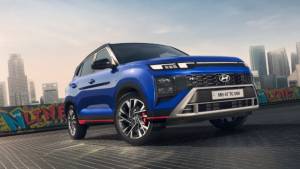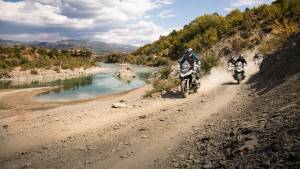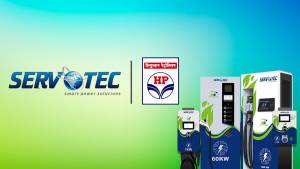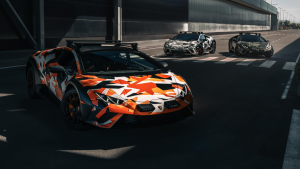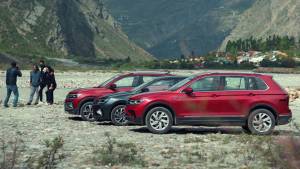Renault Koleos to Leh
Will you drive a Renault Koleos to Leh? It was not the kind of adventure I was looking for especially when motoring into Ladakh. In my mind Leh was always approached in a proper 4x4 SUV. Not a soft roader football wagon. How gullible I was, driving anything into Leh is an adventure. And so it was that I found myself standing in the porch of the ITC Maurya in Delhi at 4am one morning, watching an army of people packing all sorts of stuff into the boot of five Renault Koleos. It was an army of drivers, co-drivers, cameramen, photographers, PR personnel and technicians hurriedly trying to meet their 5am departure deadline.
Unfortunately that is never the case, another hour later the cock (if there are any in Delhi that aren't tandoori-ed already) must have crowed, the sun was throwing its first rays from beyond the horizon and half the baggage was still lying on the floor of that porch. One more hour and we were finally ready to hit the road ac it struck us that one member of the team hadn't turned up at all. Apparently the man had fallen asleep and had not woken up, even his blaring ringtone would not shake off his sleep. Leaving him behind we pushed off towards Chandigarh from where a brilliant new dual carriageway would take us towards Manali.
On this road the Koleos felt perfectly at ease, those in the convoy who had not been inside this SUV before were surprised at its comfort. Plush seats, well-sorted climate control, lovely Bose acoustics and generous space had most of the passengers nodding off minutes after having left the hotel's gates and still snoring long after having crossed Chandigarh. It was only on the climb up to Manali in the twisties when the Koleos was being chucked around the dozens of bends that some heads began showing signs of life.
Breaks for filming, snacking and peeing were taking altogether too much time, yet the convoy rolled into Manali just a little after sundown.
A stout beer followed by some delicious trout was the highlight of the evening which gave the drivers some much needed strength to plan out the next day's invasion of the formidable Rohtang pass.
For a change the next morning wasn't an early start, and after a lazy hour spent over some cold breakfast the convoy departed the gates of hotel Picadilly in Manali by a late 9am. This being the middle of the week, the influx of tourists into the area was limited. Yet we saw a steady stream of travellers make their way up to Rohtang Pass jammed like sardines into Sumos, Taveras and Innovas. We were fortunately still in comfort mode. The road to Rohtang is the only access point from the southern side into the Ladakh region, it's a vital link for fresh produce to reach this region daily.
So with overladen trucks plying day and night and little maintenance the road has deteriorated yet the Koleos wasn't concerned. Her suspension had taken on an entirely new character, where in the city she feels soft, a new found stiffness has entered the dampers. They iron out all the potholes and ruts with ease and the Koleos makes rapid progress uphill.
To our good fortune the traffic going up to Rohtang wasn't too dense which meant that we could make good time. Unfortunately a little tomfoolery in a river bed near Marhi saw one of the Koleos get stuck in the soft mud. Time to apply the tow chains and use another Koleos to haul it out. Eventually we made it past the tourists at Rohtang pass. At the pass the road has been resurfaced and it's smooth for a few kilometres on the other side as well. It's a good indicator of the efforts being put into making this region accessible.
Yet work in these parts progresses very slowly because it's an inhospitable area, it's 13000 ft above sea level, oxygen levels are low, in the winters temperatures can dip to 30 below and there are just around four summer months in which work can be done. We enjoy the few kilometres of smooth before the rough hits again all the way down to Koksar. It's close to sundown and once we drive into Jispa we jump straight into dinner and hit the sack.
Day three and we are back to early morning starts, at least that's how the plan goes. The vehicles don't leave the Padma lodge compound at Jispa till well after daybreak. So we are back to square one and fighting for time even before we leave the premises. We lose more time at Patseo waiting for a convoy of a million army trucks to go by.
Eventually the road opens up again for us and we fly up to Baralacha La on a mix of good tarmac and smooth dirt. Post Baralacha La a landslide slowed us down, eating into our schedule yet again. The constant stopping and starting also took a toll on us physically. The high altitude region gave several of us dull headaches and the wind chill and desolation adds to it. It gets more desolate as we finally head deeper into Ladakh, past the Sarchu plains, up the 20 odd bends of the Gata loops and across the Lachalung La and Kunzum La passes. The going is slow and yet the Koleos keeps moving ahead stoically. On the faster sections she handles brilliantly, the steering is nicely weighed and the suspension is turning out to be more and more brilliant. It keeps the momentum stable and the occupants comfortable.
14 hours after having left Jispa we make it to Pang, one of the most horrible places on the planet. The wind chill factor here is the severest compared to anywhere in Ladakh. It's also at a relatively high altitude with thin oxygen levels and the ambient temperature always hovers close to zero. It's the one place where altitude sickness hits the hardest. Fortunately nobody in the team is affected and with the sun well under the horizon and only the stars for company we venture out on the More plains. How I wish we had arrived at these plains to document our drive against the landscape of this place. It is the best representation of the Himalayas with crystal clear blue skies overhead against which it looks like there are scores of majestic mountains suspended.
To our good fortune the road is new, it's broad and smooth and pretty soon we are touching speeds in excess of a 100kmph. I never expected to be driving this fast at the More plains. Yet the road is incomplete and we have to keep taking detours onto the plains which in the pitch dark is dangerous. There are no features to get a location bearing and none of us can read the stars. Somehow we manage to keep stumbling back onto the road, a couple of times we do get lost and have to backtrack till we can find the right way out. The Koleos' lights make a big difference, they are bright with great spread and the beam adjustment gives great depth.
Two hours later we find ourselves climbing Tanglang La where I promptly pull over, climb into the rear seat and hand the steering over to another driver. Its been 18 hours for me behind the wheel and my eyes which have been open since 4 in the morning are finding it hard to stay focused. At 15000 feet above sea level that can be a dangerous thing. So I nod off and wake up only when we drive into our hotel, a full 21 hours after having started from Jispa. I am exhausted but perhaps would have been even more knackered driving anything lesser. And as my head touches my pillow I notch up one more successful drive into Ladakh, courtesy the Renault Koleos.
Related Stories
Top Stories
Latest Videos
Most Popular
Network18 Updates

